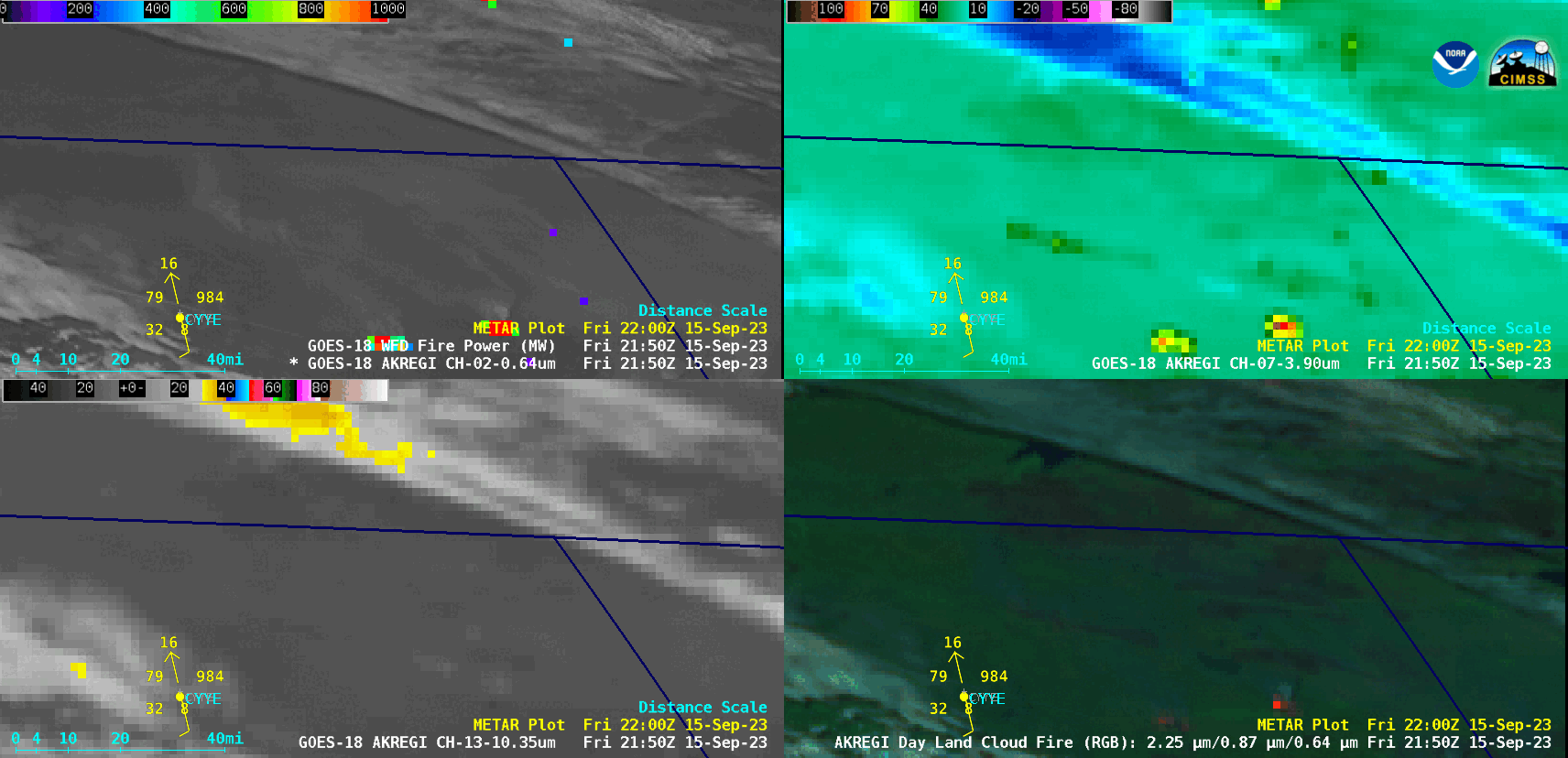
[ Archive ]

 |
CIMSS-NOAA Weekly Report [ Archive ] |
 |
CIMSS-NOAA WEEKLY HIGHLIGHTS FOR THE WEEK ENDING SEPTEMBER 22, 2023
DATA, INFORMATION, AND USE-INSPIRED SCIENCE:
FUTURE OUTLOOK:
AWARDS AND RECOGNITION:
JPSS Instrument and Imagery Cal/Val Team awarded RHG Award: The JPSS Instrument and Imagery Cal/Val Team was awarded the Robert H Goddard Award - Exceptional Achievement for Science (Team) by NASA. The citation was for outstanding mission-critical support to the pre and post launch calibration/validation of the JPSS-2 satellite. Cooperative Institute for Meteorological Satellite Studies (CIMSS)/Space Science and Engineering Center (SSEC) awardees include David Tobin, Lori Borg, Dan Deslover, Chris Moeller, Joe Taylor, William Straka, and Hank Revercomb. The actual award was presented earlier this year and an announcement and recognition will be held on 25 September 2023 STAR all hands meeting with Dr. Steven Volz, and also at the STAR JPSS Leads meeting. (W. Straka III, CIMSS)
TRAVEL AND MEETINGS:
TRAINING AND EDUCATION:
VISIT Training on LightningCast probabilities: Scott Lindstrom from the Cooperative Institute for Meteorological Satellite Studies gave a Virtual Institute for Satellite Integration Training (VISIT) webinar to a the Science and Operations Officer (SOO) at National Weather Service forecast office in Jacksonville FL. The topic was LightningCast Probabilities, a decision-support tool that is part of the ProbSevere product portfolio. LightningCast gives the likelihood of a Geostationary Lightning Mapper (GLM) observation within the next 60 minutes given the current observations from the GOES-R Advanced Baseline Imagery (ABI). The training took the form of a Question/Answer session after the SOO watched the training video located here: https://www.youtube.com/watch?v=I0Zy8K3nlAc. (S. Lindstrom, CIMSS, 608 263 4425)
MEDIA INTERACTIONS AND REQUESTS:
SOCIAL MEDIA AND BLOG Posts:
SSEC and CIMSS Scientists in the news: Scientists at the University of Wisconsin-Madison (UW) Space Science and Engineering Center (SSEC) and the Cooperative Institute for Meteorological Satellite Studies (CIMSS) provide expert interviews, imagery and case studies to promote science. This week: 1) NASA Earth Observatory featured CIMSS scientist Scott Bachmeier's blog post discussing high winds and pyrocumulonimbus clouds over Alberta Canada: https://earthobservatory.nasa.gov/images/151860/a-smoky-cloud-swirl. 2) CIMSS Satellite Blog contributors Scott Lindstrom, Scott Bachmeier, and Alexa Ross published these case studies: "Microwave estimates of rainfall from direct broadcast data on Guam" (September 21), "A week of Atlantic activity viewed from CSPP Geosphere" (September 21), "Haze propagating across the Pacific Ocean" (September 19), "5.15 micrometer data on GeoXO as revealed by model output" (September 18), "Post-Tropical Cyclone Lee makes landfall in Nova Scotia" (September 16), "Pyrocumulonimbus clouds produced by wildfires in British Columbia and Alberta" (September 16), "Eruption of the Ruby submarine volcano northwest of Saipan" (September 16), "GLM observations of lightning with the eruption of Mt. Shishaldin" (September 16). Read more at the CIMSS Satellite Blog: https://cimss.ssec.wisc.edu/satellite-blog/. (S. Lindstrom, CIMSS, S. Bachmeier, CIMSS, A. Ross, CIMSS, 608-263-6765, E. Verbeten, SSEC)
 (Click image to enlarge)
(Click image to enlarge)
Figure: GOES-18 imagery shows a wildfire east of Fort Nelson (CYYE) in far northeastern British Columbia that produced 3 consecutive pyrocumulonimbus (pyroCb) cloud pulses late in the day on 15 September 2023. This wildfire burned very hot — 3.9 µm shortwave infrared brightness temperatures reached 137.88ºC. Images include “Red” Visible (0.64 µm) + Fire Power derived product (top left), Shortwave Infrared (3.9 µm, top right), “Clean” Infrared Window (10.3 µm, bottom left) and Day Land Cloud Fire RGB (bottom right).
PUBLICATIONS:
OTHER:
| Archived Weeklies Page | Submit a report item |